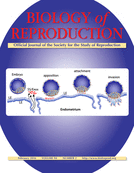 Without a certain protein, mouse sperm have motility disorders. That’s the conclusion of a paper that has itself been stopped — by errors in the data analysis, carried out by a third-party company.
Without a certain protein, mouse sperm have motility disorders. That’s the conclusion of a paper that has itself been stopped — by errors in the data analysis, carried out by a third-party company.
The retraction note pins the analysis, which led to faulty data, on a “corporate company.” Aside from the companies that sell the kits used for substrates, assays, and detection, there’s only one company mentioned in the paper:
Generation of the mouse model was performed by the Cyagen Company (Guangzhou, China)
However, a representative of Cyagen says it does not offer the type of analysis described by the retraction note.
Here’s the full retraction note for the 2015 paper in Biology of Reproduction (which is paywalled — tsk, tsk):
The paper reported that loss of Guf1 impairs sperm mitochondrial function and leads to male infertility in mice. The generation and phenotype analysis of Guf1 gene knockout mice were carried out by a corporate company. The authors discovered that the data presented in the paper was not confirmed and have now detected a number of errors in several figures. The authors deeply regret this circumstance and apologize to the community.
“Loss of Guf1 Impairs Sperm Mitochondrial Function and Leads to Male Infertility” is not yet indexed in Thomson Scientific’s Web of Knowledge.
Austin Jelcick, the Director of Business Strategy at Cyagen, told us that they did not perform any of the analysis:
We make the mice, we ship the mice, and that’s the end of our involvement.
Further, Cyagen did not generate the “Guf1 gene knockout mice” mentioned in the retraction note. Cyagen sent them mice that they had to breed with other mice:
The mice that we provided them were a reagent or a tool or a component to generate their final knockout mice.
Austin explained that they provided Guf1+/flox mice, which the paper explains,
were mated with mice carrying Guf1+/flox and Stra8-Cre transgene mice.
No company is cited as helping with that portion of the experiment.
We’ve reached out to first author Yong-Rui Piao, of the Affiliated Hospital of YanBian University in China, for more information on the third party’s involvement, and to the journal. We’ll update this post with anything else we learn.
This isn’t the first paper to be felled by the actions of a so-called third party: The slews of retractions from Springer and BioMed Central for fake reviews included evidence that third parties were involved. In another case, authors suggested a “paper company” was at fault, but the journal disagreed.
We’ve reported on Cyagen, before, too. In August they were offering vouchers for researchers who cited them in a paper.
Like Retraction Watch? Consider making a tax-deductible contribution to support our growth. You can also follow us on Twitter, like us on Facebook, add us to your RSS reader, sign up on our homepage for an email every time there’s a new post, or subscribe to our new daily digest. Click here to review our Comments Policy. For a sneak peek at what we’re working on, click here.